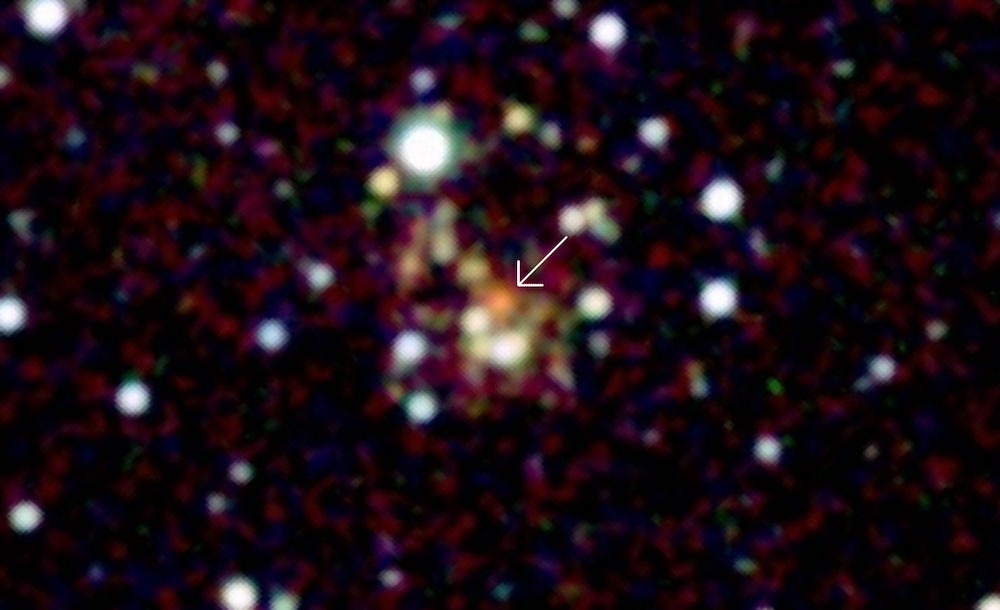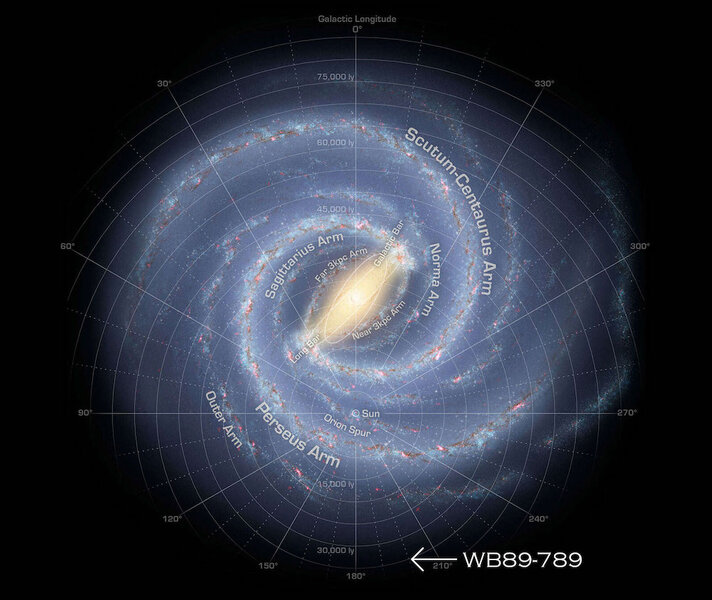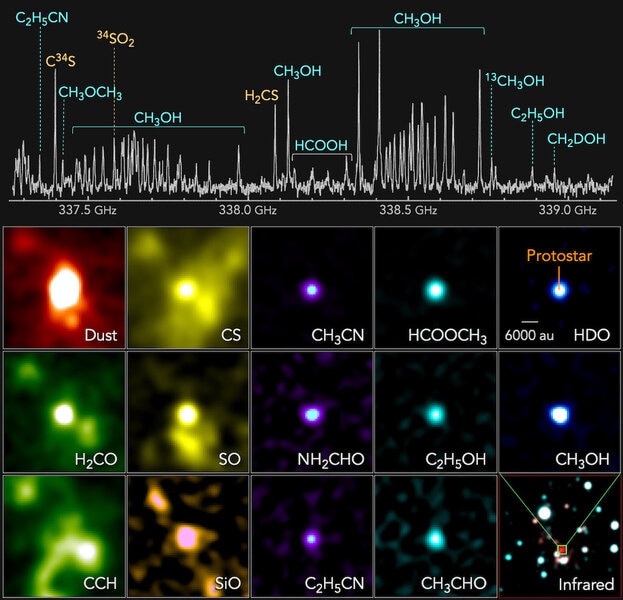Create a free profile to get unlimited access to exclusive videos, sweepstakes, and more!
Star birth at the galaxy's edge
A star still forming found in the galaxy's far-flung regions.

When I was a kid I loved watching Star Trek (note: I still do) and one of the concepts in the show was that there was a "barrier" at the edge of the galaxy; a vaguely hand-wavy energy sheet that hung in space and if you passed through it you'd get psychic powers (hey, it was the '60s).
That's a fun idea for a scifi show, but galaxies aren't really like that. They're collections of (among many things) millions or billions of stars held together by their mutual gravity, and they don't have an "edge." Instead, they fade away with distance from the center, with fewer and fewer stars until they blend in with intergalactic space.
Things can be different at the outskirts of a galaxy, though. For example, when we look at stars in the outer regions of the Milky Way's disk, we see they have fewer heavy elements (like carbon, iron, and so on as opposed to lighter ones like hydrogen and helium) in them than stars like the Sun. Star formation happens at a higher rate in the inner parts of a galaxy, which means there are more massive stars there that make heavy elements, explode, and seed gas clouds with those elements which are incorporated into the next generation of stars.
Those elements can affect how stars form, so it's a good idea to compare star birth in the outer galaxy versus the inner regions. If you see a star forming in the outer galaxy, does it look any different than what we'd see locally?
The answer, surprisingly, is maybe not.
WB89-789 is a cloud of gas and dust located about 35,000 light years away from Earth in the direction of Orion, opposite the sky from the galactic center, placing it about 62,000 light years out from the heart of the Milky Way. That really is at the edge of the galactic disk, which is 120,000 light years or so across! WB89-789 is a few dozen light years across, and has a mass of about 6,000 times that of the Sun, making it capable of creating tens of thousands of stars, assuming most are lower mass than the Sun, which is usually the case.
Astronomers observed it using ALMA, the Atacama Large Millimeter/submillimeter array, which detects light with much longer wavelengths than our eyes can see. This makes it sensitive to light emitted by the kinds of atoms and molecules you expect to see in star-forming regions.
They got a clear detection of what's called a hot core, a star in the early stage of forming. Hot cores are condensing clumps of material defined as being less than about a third of a light year across, dense (about a million atoms/molecules per cubic centimeter; far denser than space but still a whisper compared to air on Earth which is ten trillion times denser), and with a temperature warmer than roughly -170°C.
This is the first time a hot core has been seen in the extreme outer galaxy. And what they found is surprising, in that it wasn't surprising at all.
They detected no fewer than 39 different molecular species containing from 2 up to 9 atoms, including atoms of silicon, carbon, sulfur, nitrogen, and oxygen. A few examples are sulfur monoxide (SO), formaldehyde (H2CO), ethanol (C2H5OH), methanol (CH3OH), and methyl formate (HCOOCH3). They even saw water, and not just water but heavy water, with deuterium instead of hydrogen — deuterium is an isotope of hydrogen with a neutron in its nucleus along with the usual proton. They also saw plenty of dust, which is common in forming stars.
In fact, all these molecules are commonly seen surrounding hot cores in our own neighborhood, or, at least, closer in to the galaxy's center. This shows that, at least in this case, complex organic (carbon-based) molecules form just as well out near the galaxy's exurbs as they do here.
And it strongly implies that such molecules can easily form in what astronomers call primordial or primitive environments, where heavy elements abundances are lower. This has implications beyond our own galaxy. Back in the day — oh, say 13 billion years ago — the Universe was far more deficient in these heavier elements. There hadn't been enough time for massive stars to make a lot of them. We don't know much about what conditions were like then, because we'd have to look 13 billion light years away, which is difficult, to put it mildly.
But we can use proxies for this time by looking to similar environments in local space. The edge of the galaxy isn't a perfect analogy, but it's close, and it helps bridge the gap between primordial and current star-forming conditions. Until we have a clearer view of what the baby Universe was up to, this will do pretty nicely.




























